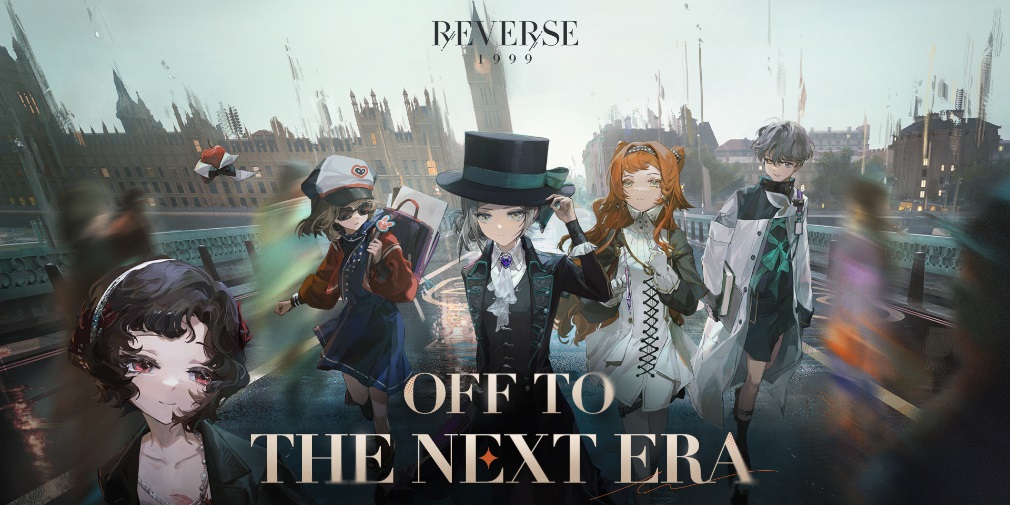
- We got the chance to chat with the Reverse: 1999 team about all its various aspects
- Find out what inspired its creation, more about the latest update and a special message for fans
- Reverse: 1999 is a time-travelling idle RPG from Bluepoch
It’s safe to say that Reverse: 1999 has taken the world by Storm – pun very much intended – as the musically-inspired time-travelling RPG continues to release new updates and accrue downloads with much fanfare. But, you might also be wondering exactly how developer Bluepoch got the idea for Reverse: 1999 in the first place, and what else is hiding under the hood.
Well, we got the chance to put our questions to the team at Reverse: 1999, asking about the inspiration behind it, their latest update and a few more bits and pieces that came to mind. So if you want to find out more about the game, here’s all you need to know.
To start, we wanted to get an idea of the inspiration behind Reverse: 1999. With it featuring an eclectic cast of characters drawing from everything including fairytales and conspiracy theories, we had to assume there was something pretty intriguing behind all these strange characters and locations you encounter.
What was the inspiration behind Reverse: 1999?
“However fast the world is changing, many cultures from the past – such as jazz, retro sci-fi, and pirate radio – remain alive and popular. As well as the past, we also pay equal attention to the future. That’s why we named the game “Reverse: 1999” (aka “Return to the Future 1999” in Chinese). We are big fans of these cultures and have always wanted a platform to share them with more people. That was the original idea when we built the world of the game.”
Pirate Radio certainly forms a major part of the Reverse: 1999 universe, as we’ve already seen from the opening of the game and the character Regulus with her pirate radio ship Rockin’ Apple. Which, sadly, fans of her will get to immediately see the second iteration of this ship sinking to the bottom of the Adriatic in the course of getting to the island that’s the setting for the latest update…
“It is an honour to have our fan’s attention and support. They have always been major reasons for our success. Since the very beginning of the project, we have tried our best to create a cinematic feel in the game. We designed a unique art style, wrote complex group stories, shaped characters with conversational lines, built meaningful scenes and applied interesting shots and transitions so players can enjoy a movie-like atmosphere. We hope to convey our design philosophy to our players and give them a satisfying in-game experience.”
Reverse: 1999 can certainly claim to have a unique art-style. While players who aren’t huge fans of animesque designs might be turned away, they’d be missing out on a fairly unique set of characters and places. Everything from the Victorian-esque main character Vertin to stylish 1960s DJ Regulus and the aptly named APPle who’s…an apple, wearing a shirt collar and tie. Hey, no-one said this story was easy to understand.

“In the new story, Vertin and her friends accidentally arrive on an unknown island. The residents there believe in a mysterious school that reveres numbers and philosophy above everything else. With its history dating back to the fifth-century BC the school has changed its doctrines and split countless times over the years, eventually leaving this branch on the island.
“The art style of the new update derives from Greek culture, and the title of the new story, ‘The Prisoner in the Cave,’ is actually a theory from Plato’s Republic, which was one of the inspirations for our backstory. The coming main story chapters will continue to centre around this theory.
“The residents of the island believe everything can be interpreted through numbers. They strictly abide by the precepts of the school, hence the unique style of dress and their unusual behaviour. You will discover more special details about them in the story, and we look forward to receiving your feedback on it.”
The ‘Prisoner in the Cave’ in this case refers to Plato’s ‘Allegory of the Cave’. Put simply, this was a metaphor for our conception of reality, where Greek philosopher Plato posited that a group of prisoners locked in a cave and only able to see the shadows of ‘real’ things on a wall would consider them to be real. So, maybe the people on this island have something to do with that idea of reality and our conception of what’s real…? You’ll have to play the latest update to find out.

“Thank you once again for your unwavering support and generosity! Together, we have accomplished remarkable feats and made a positive impact.
“We hope you have a good time in version 1.4 and enjoy our Mystery Box Carnival. Let’s continue to stand together, united in purpose, as we strive to create a better game for all, thank you.”
Reverse: 1999 has indeed proved to be massively popular. And if you’re interested in finding out more and getting started with this title, we’ve got everything you need. You can read our essential guide to give you an overview of the game, and if you’re a seasoned veteran why not check out our tier list of all the available arcanists to give you a headstart?